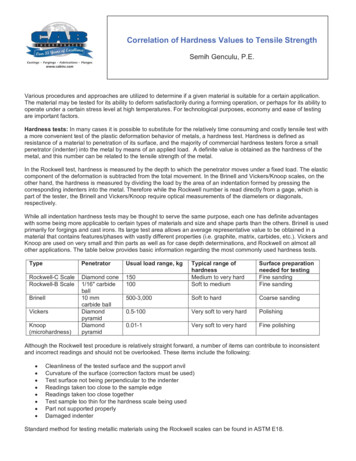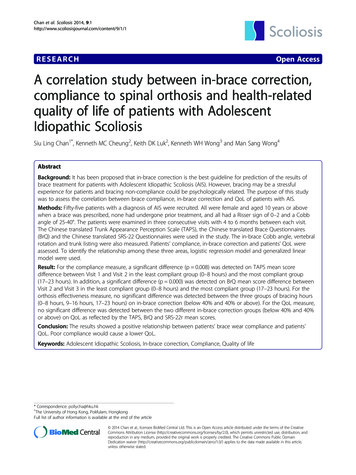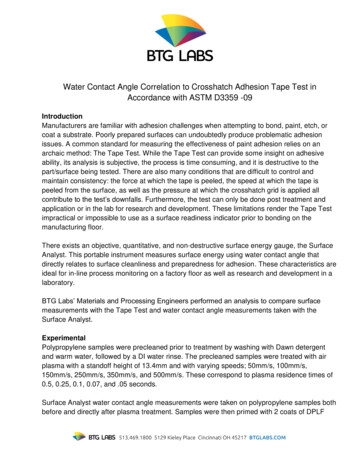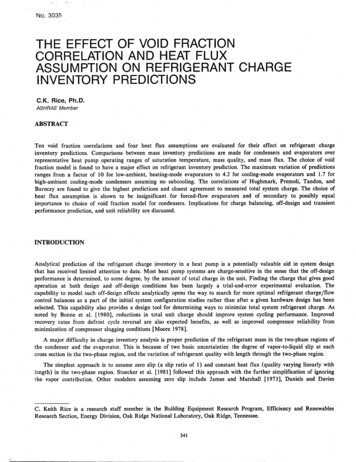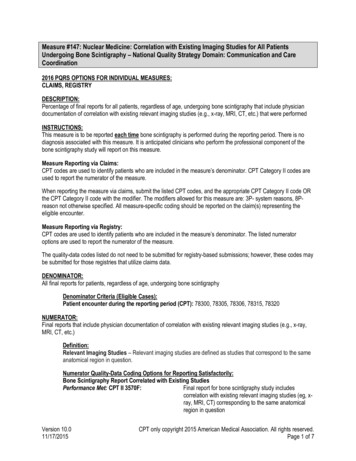
Transcription
Measure #147: Nuclear Medicine: Correlation with Existing Imaging Studies for All PatientsUndergoing Bone Scintigraphy – National Quality Strategy Domain: Communication and CareCoordination2016 PQRS OPTIONS FOR INDIVIDUAL MEASURES:CLAIMS, REGISTRYDESCRIPTION:Percentage of final reports for all patients, regardless of age, undergoing bone scintigraphy that include physiciandocumentation of correlation with existing relevant imaging studies (e.g., x-ray, MRI, CT, etc.) that were performedINSTRUCTIONS:This measure is to be reported each time bone scintigraphy is performed during the reporting period. There is nodiagnosis associated with this measure. It is anticipated clinicians who perform the professional component of thebone scintigraphy study will report on this measure.Measure Reporting via Claims:CPT codes are used to identify patients who are included in the measure’s denominator. CPT Category II codes areused to report the numerator of the measure.When reporting the measure via claims, submit the listed CPT codes, and the appropriate CPT Category II code ORthe CPT Category II code with the modifier. The modifiers allowed for this measure are: 3P- system reasons, 8Preason not otherwise specified. All measure-specific coding should be reported on the claim(s) representing theeligible encounter.Measure Reporting via Registry:CPT codes are used to identify patients who are included in the measure’s denominator. The listed numeratoroptions are used to report the numerator of the measure.The quality-data codes listed do not need to be submitted for registry-based submissions; however, these codes maybe submitted for those registries that utilize claims data.DENOMINATOR:All final reports for patients, regardless of age, undergoing bone scintigraphyDenominator Criteria (Eligible Cases):Patient encounter during the reporting period (CPT): 78300, 78305, 78306, 78315, 78320NUMERATOR:Final reports that include physician documentation of correlation with existing relevant imaging studies (e.g., x-ray,MRI, CT, etc.)Definition:Relevant Imaging Studies – Relevant imaging studies are defined as studies that correspond to the sameanatomical region in question.Numerator Quality-Data Coding Options for Reporting Satisfactorily:Bone Scintigraphy Report Correlated with Existing StudiesPerformance Met: CPT II 3570F:Final report for bone scintigraphy study includescorrelation with existing relevant imaging studies (eg, xray, MRI, CT) corresponding to the same anatomicalregion in questionVersion 10.011/17/2015CPT only copyright 2015 American Medical Association. All rights reserved.Page 1 of 7
ORORBone Scintigraphy Report not Correlated for System ReasonsAppend a modifier (3P) to CPT Category II code 3570F to report documented circumstances thatappropriately exclude patients from the denominator.System Performance Exclusion: 3570F with 3P: Documentation of system reason(s) for not documentingcorrelation with existing relevant imaging studies in finalreport (eg, no existing relevant imaging study available,patient did not have a previous relevant imaging study)Note: Correlative studies are considered to be unavailable if relevant studies (reports and/or actualexamination material) from other imaging modalities exist but could not be obtained after reasonable effortsto retrieve the studies are made by the interpreting physician prior to the finalization of the bone scintigraphyreport.Bone Scintigraphy Report not Correlated, Reason not Otherwise SpecifiedAppend a reporting modifier (8P) to CPT Category II code 3570F to report circumstances when the actiondescribed in the numerator is not performed and the reason is not otherwise specified.Performance Not Met: 3570F with 8P:Bone scintigraphy report not correlated in the finalreport with existing relevant imaging studies, reason nototherwise specifiedRATIONALE:Radionuclide bone imaging plays an integral part in tumor staging and management; the majority of bone scans areperformed in patients with a diagnosis of malignancy, especially carcinoma of the breast, prostate gland, and lung.This modality is extremely sensitive for detecting skeletal abnormalities, and numerous studies have confirmed that itis considerably more sensitive than conventional radiography for this purpose. However, the specificity of bone scanabnormalities can be low since many other conditions may mimic tumor; therefore, it is important that radionuclidebone scans are correlated with available, relevant imaging studies. Existing imaging studies that are available canhelp inform the diagnosis and treatment for the patient. Furthermore, correlation with existing radiographs isconsidered essential to insure that benign conditions are not interpreted as tumor. While there are no formal studieson variations in care in how often correlation with existing studies is not performed, there is significant anecdotalinformation from physicians practicing in the field that there is a gap in care and that correlation is not occurringfrequently when images are available.Literature suggests that as many as 30% of Radiology reports contain errors, regardless of the imaging modality,radiologists’ experience, or time spent in interpretation. Evidence has also suggested that Radiology reports arelargely non-standardized and commonly incomplete, vague, untimely, and error-prone and may not serve the needsof referring physicians. Therefore, it is imperative that existing imaging reports be correlated with the NuclearMedicine bone scintigraphy procedure to ensure proper diagnosis and appropriate patient treatment.CLINICAL RECOMMENDATION STATEMENTS:Bone scintigraphic abnormalities should be correlated with appropriate physical examination and imaging studies toascertain that osseous or soft-tissue abnormalities, which might cause cord or other nerve compression or pathologicfracture in an extremity, are not present. (SNM, 2003)Interpretation criteriaBone scans are very sensitive for disease, but specificity of findings is low and must be interpreted in light of otherinformation1. History2. Physical examVersion 10.011/17/2015CPT only copyright 2015 American Medical Association. All rights reserved.Page 2 of 7
3. Other test results4. Comparison with previous studies(SNM, 2003)Reporting1.2.3.4.5.Description of techniqueDescription of abnormal tracer uptakeCorrelation with other studiesComparison with previous studiesInterpretation(SNM, 2003)Comparisons with previous examinations and reports, when possible, should be a part of the imaging consultationand report. Integrated PET/CT studies are more valuable when correlated with previous diagnostic CT, previousPET, previous PET/CT, previous MRI, and all appropriate imaging studies and clinical data that are relevant. (SNM,2010)As bone tracer concentration reflects osteoblastic activity which is a common response to a wide range ofpathologies, a focus of abnormal tracer concentration should not be confidently assigned to a particular pathologywithout a typical pattern of tracer distribution such as multiple randomly placed foci in metastatic bone disease ormultiple aligned foci of rib uptake in trauma. In the absence of this, correlation of foci or uptake with alternativemodality images such as plain radiographs, MR or CT images should be reviewed when available as this cansignificantly increase the accuracy of bone scintigraphy interpretation. (BNMS, 2014)COPYRIGHT:The Measures are not clinical guidelines, do not establish a standard of medical care, and have not been tested forall potential applications.The Measures, while copyrighted, can be reproduced and distributed, without modification, for noncommercialpurposes, eg, use by health care providers in connection with their practices. Commercial use is defined as the sale,license, or distribution of the Measures for commercial gain, or incorporation of the Measures into a product orservice that is sold, licensed or distributed for commercial gain.Commercial uses of the Measures require a license agreement between the user and the American MedicalAssociation (AMA), [on behalf of the Physician Consortium for Performance Improvement (PCPI )] or the Societyof Nuclear Medicine and Molecular Imaging (SNMMI). Neither the AMA, SNMMI, PCPI, nor its members shall beresponsible for any use of the Measures.The AMA’s and PCPI’s significant past efforts and contributions to the development and updating of theMeasures is acknowledged. SNMMI is solely responsible for the review and enhancement (“Maintenance”) ofthe Measures as of August 8, 2014.SNMMI encourages use of the Measures by other health care professionals, where appropriate.THE MEASURES AND SPECIFICATIONS ARE PROVIDED “AS IS” WITHOUT WARRANTY OF ANY KIND. 2014 American Medical Association and Society of Nuclear Medicine and Molecular Imaging. All Rights Reserved.Applicable FARS/DFARS Restrictions Apply to Government Use.Version 10.011/17/2015CPT only copyright 2015 American Medical Association. All rights reserved.Page 3 of 7
Limited proprietary coding is contained in the Measure specifications for convenience. Users of the proprietary codesets should obtain all necessary licenses from the owners of these code sets. The AMA, SNMMI, the PCPI and itsmembers disclaim all liability for use or accuracy of any Current Procedural Terminology (CPT ) or other codingcontained in the specifications.CPT contained in the Measures specifications is copyright 2004-2015 American Medical Association. LOINC copyright 2004-2015 Regenstrief Institute, Inc. SNOMED CLINICAL TERMS (SNOMED CT ) copyright 2004-2015College of American Pathologists. All Rights Reserved.Version 10.011/17/2015CPT only copyright 2015 American Medical Association. All rights reserved.Page 4 of 7
Version 10.011/17/2015CPT only copyright 2015 American Medical Association. All rights reserved.Page 5 of 7
2016 Claims/Registry Individual Measure FlowPQRS #147: Nuclear Medicine: Correlation with Existing Imaging Studies for All PatientsUndergoing Bone ScintigraphyPlease refer to the specific section of the Measure Specification to identify the denominator and numeratorinformation for use in reporting this Individual Measure.1. Start with Denominator2. Check Encounter Performed:a. If Encounter as Listed in the Denominator equals No, do not include in Eligible Patient Population. StopProcessing.b. If Encounter as Listed in the Denominator equals Yes, include in the Eligible population.3. Denominator Population:a. Denominator population is all Eligible Patients in the denominator. Denominator is represented asDenominator in the Sample Calculation listed at the end of this document. Letter d equals 8 procedures inthe sample calculation.4. Start Numerator5. Check Final Report for Bone Scintigraphy Study Includes Correlation with Existing Relevant Imaging StudiesCorresponding to the Same Anatomical Region in Question:a. If Final Report for Bone Scintigraphy Study Includes Correlation with Existing Relevant Imaging StudiesCorresponding to the Same Anatomical Region in Question equals Yes, include in Reporting Met andPerformance Met.b. Reporting Met and Performance Met letter is represented in the Reporting Rate and Performance Rate inthe Sample Calculation listed at the end of this document. Letter a equals 3 procedures in SampleCalculation.c. If Final Report for Bone Scintigraphy Study Includes Correlation with Existing Relevant Imaging StudiesCorresponding to the Same Anatomical Region in Question equals No, proceed to Documentation ofSystem Reason(s) for Not Documenting Correlation with Existing Relevant Imaging Studies in FinalReport.6. Check Documentation of System Reason(s) for Not Documenting Correlation with Existing Relevant ImagingStudies in Final Report:a. If Documentation of System Reason(s) for Not Documenting Correlation with Existing Relevant ImagingStudies in Final Report equals Yes, include in Reporting Met and Performance Exclusion.b. Reporting Met and Performance Exclusion letter is represented in the Reporting Rate in the SampleCalculation listed at the end of this document. Letter b equals 2 procedures in the Sample Calculation.c. If Documentation of System Reason(s) for Not Documenting Correlation with Existing Relevant ImagingStudies in Final Report equals No, proceed to one Scintigraphy Report Not Correlated in the Final Reportwith Existing Relevant Imaging Studies, Reason not Specified.Version 10.011/17/2015CPT only copyright 2015 American Medical Association. All rights reserved.Page 6 of 7
7. Check Bone Scintigraphy Report Not Correlated in the Final Report with Existing Relevant Imaging Studies,Reason not Specified:a. If Bone Scintigraphy Report Not Correlated in the Final Report with Existing Relevant Imaging Studies,Reason not Specified equals Yes, include in the Reporting Met and Performance Not Met.b. Reporting Met and Performance Not Met letter is represented in the Reporting Rate in the SampleCalculation listed at the end of this document. Letter c equals 2 procedures in the Sample Calculation.c. If Bone Scintigraphy Report Not Correlated in the Final Report with Existing Relevant Imaging Studies,Reason not Specified equals No, proceed to Reporting Not Met.8. Check Reporting Not Met:a. If Reporting Not Met equals No, Quality Data Code or equivalent not reported. 1 procedure has beensubtracted from the reporting numerator in the sample calculation.Version 10.011/17/2015CPT only copyright 2015 American Medical Association. All rights reserved.Page 7 of 7
The modifiers allowed for this measure are: 3P- system reasons, 8P- reason not otherwise specified. All measure-specific coding should be reported on the claim(s) representing the eligible encounter. Measure Reporting via Registry: CPT codes are used to identify patients who are included in the
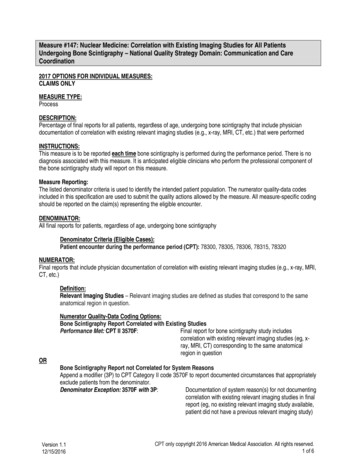
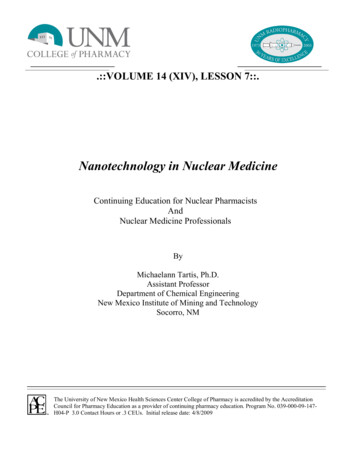
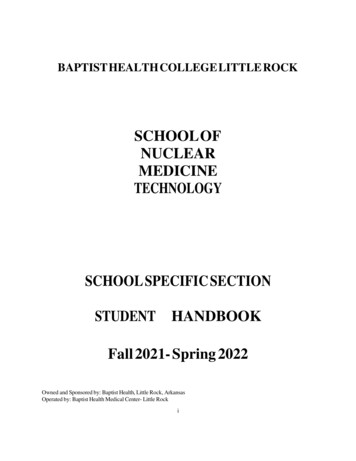
![First Revision No. 147-NFPA 20-2013 [ Global Input ]](/img/4/20-a15-fim-aaa-fd-frstatements.jpg)


